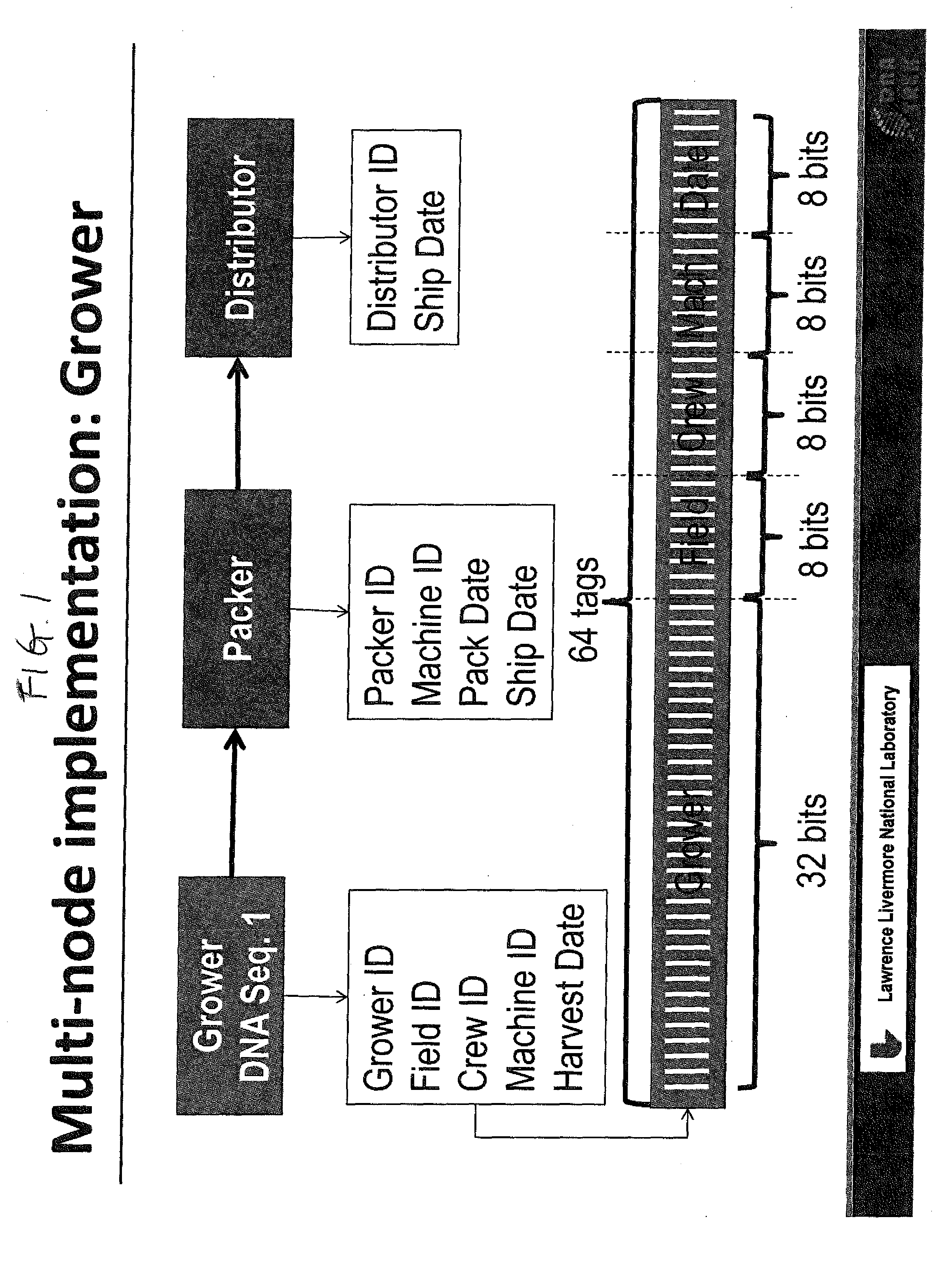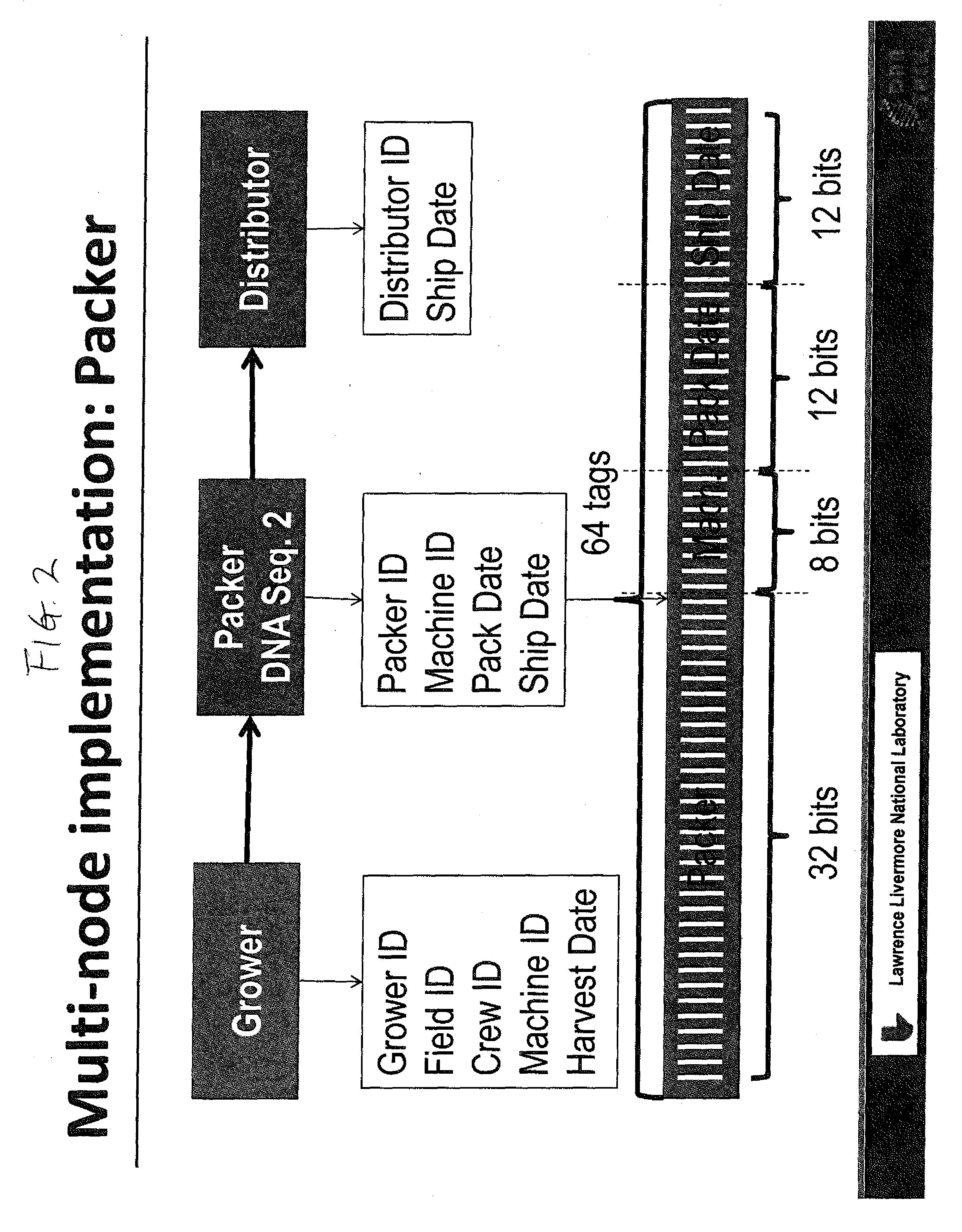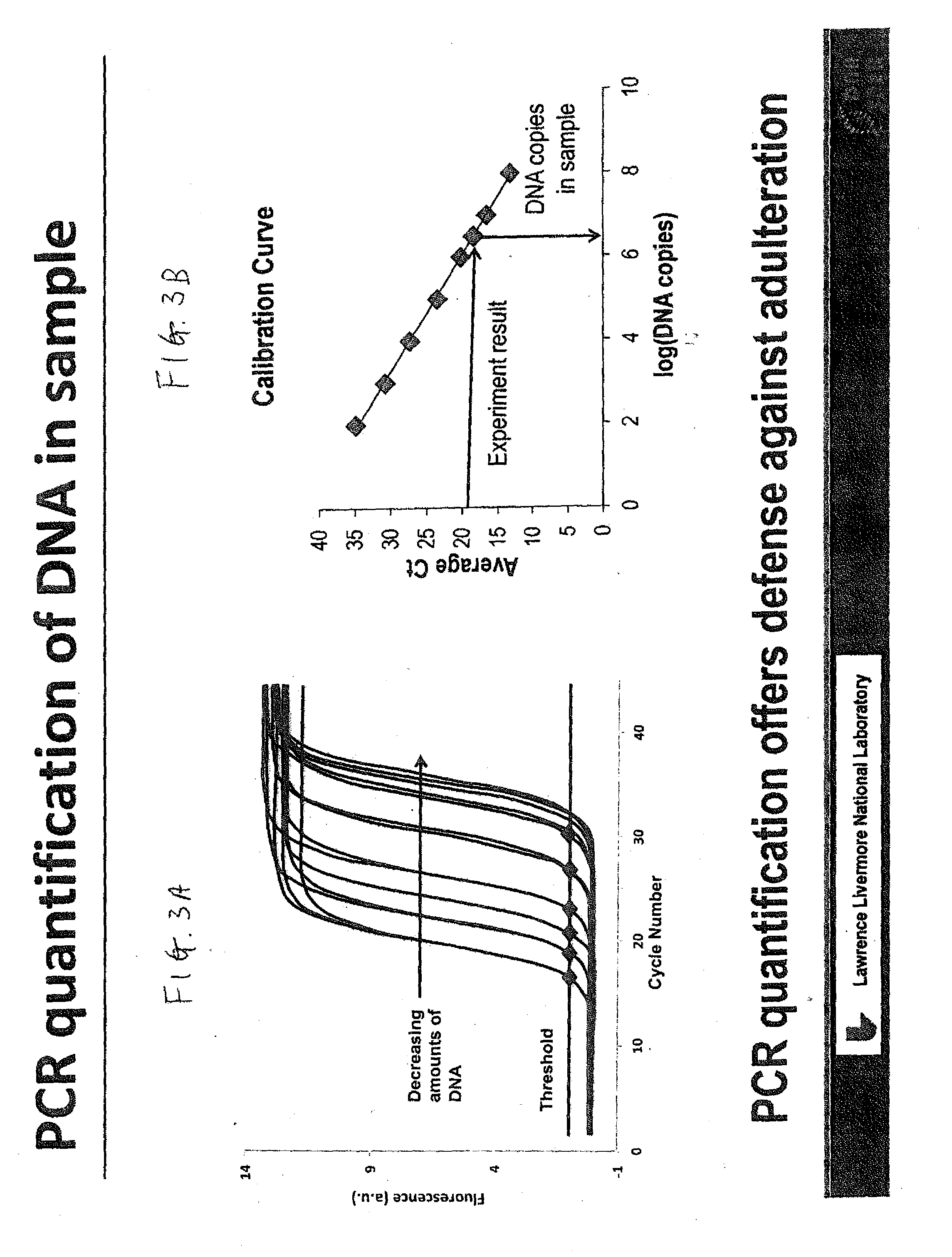DNA Based Bar Code for Improved Food Traceability
a bar code and food technology, applied in the field of dna based bar codes for improving food traceability, can solve the problems of increasing complexity of the pathway from primary production to the consumer, time is the enemy, and the supply chain traceability is difficult to ensure the quality of food
- Summary
- Abstract
- Description
- Claims
- Application Information
AI Technical Summary
Benefits of technology
Problems solved by technology
Method used
Image
Examples
Embodiment Construction
[0024]Advances in biology have produced materials that enable the development of a very efficient, effective and low cost food tracing system. One such material is DNATrax. DNATrax has been used as simulants of bio-threat microparticles for simulating terrorist attacks, and for tracking and quantifying particulate migration. See for example, U.S. Pat. No. 8,293,535 and U.S. Application 2014 / 0057276. U.S. Application 2014 / 0272097 discloses DNA marking of items for authenticating the items. However, none of the above documents relates to the problem of tracing items to the origin of these items, such as the problem of tracing the origin of food products.
[0025]DNATrax offers an opportunity to trace food along multiple steps in the supply chain and ultimately to the consumer by applying the product identification directly on many food products, at a cost significantly lower than any other method. DNATrax is a safe and versatile material containing food-based FDA-approved sugars, and a u...
PUM
| Property | Measurement | Unit |
|---|---|---|
| Force | aaaaa | aaaaa |
| Temperature | aaaaa | aaaaa |
| Length | aaaaa | aaaaa |
Abstract
Description
Claims
Application Information
 Login to View More
Login to View More - R&D
- Intellectual Property
- Life Sciences
- Materials
- Tech Scout
- Unparalleled Data Quality
- Higher Quality Content
- 60% Fewer Hallucinations
Browse by: Latest US Patents, China's latest patents, Technical Efficacy Thesaurus, Application Domain, Technology Topic, Popular Technical Reports.
© 2025 PatSnap. All rights reserved.Legal|Privacy policy|Modern Slavery Act Transparency Statement|Sitemap|About US| Contact US: help@patsnap.com



